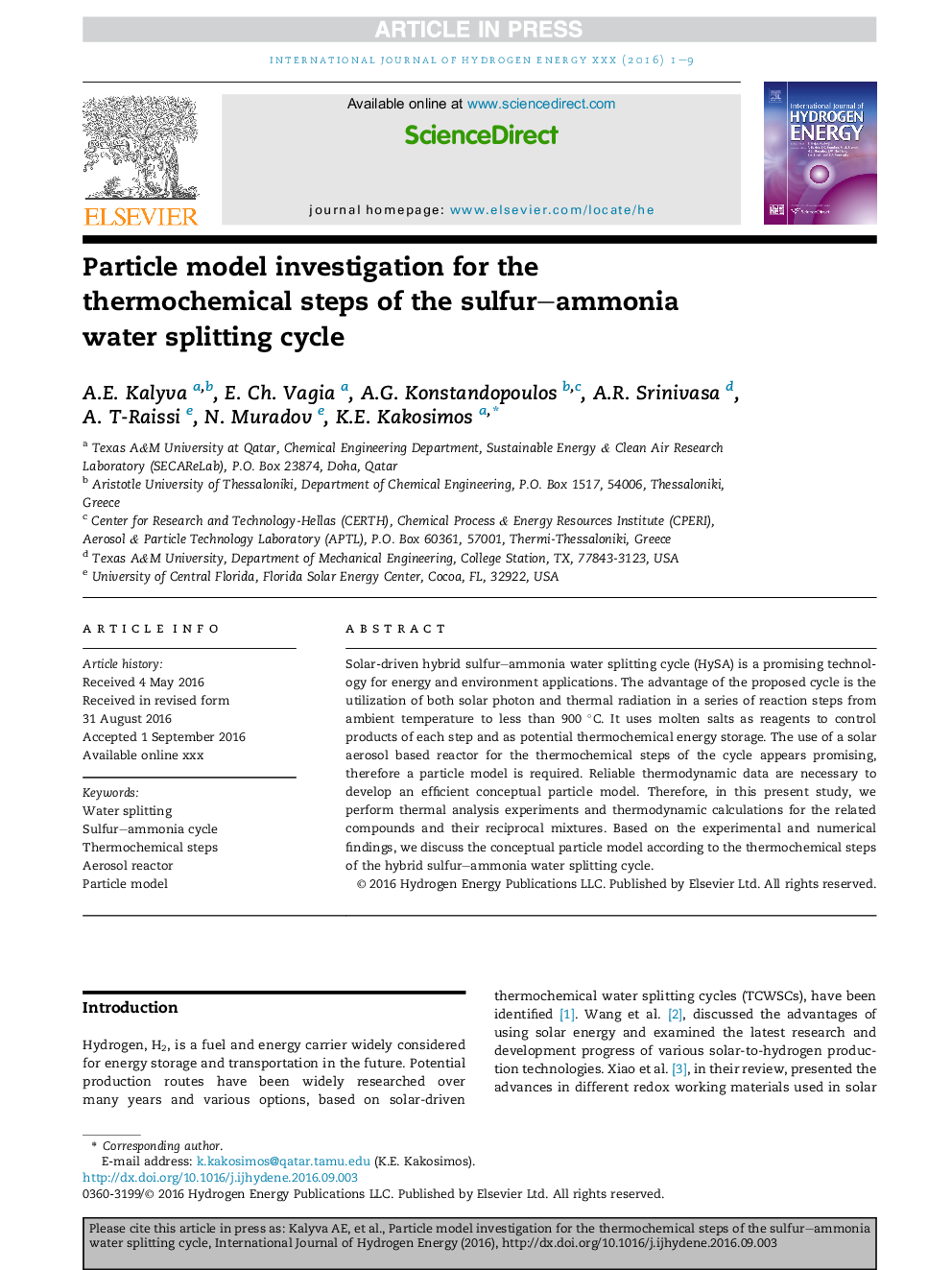| Article ID | Journal | Published Year | Pages | File Type |
|---|---|---|---|---|
| 5148452 | International Journal of Hydrogen Energy | 2017 | 9 Pages |
Abstract
Solar-driven hybrid sulfur-ammonia water splitting cycle (HySA) is a promising technology for energy and environment applications. The advantage of the proposed cycle is the utilization of both solar photon and thermal radiation in a series of reaction steps from ambient temperature to less than 900 °C. It uses molten salts as reagents to control products of each step and as potential thermochemical energy storage. The use of a solar aerosol based reactor for the thermochemical steps of the cycle appears promising, therefore a particle model is required. Reliable thermodynamic data are necessary to develop an efficient conceptual particle model. Therefore, in this present study, we perform thermal analysis experiments and thermodynamic calculations for the related compounds and their reciprocal mixtures. Based on the experimental and numerical findings, we discuss the conceptual particle model according to the thermochemical steps of the hybrid sulfur-ammonia water splitting cycle.
Related Topics
Physical Sciences and Engineering
Chemistry
Electrochemistry
Authors
A.E. Kalyva, E. Ch. Vagia, A.G. Konstandopoulos, A.R. Srinivasa, A. T-Raissi, N. Muradov, K.E. Kakosimos,
